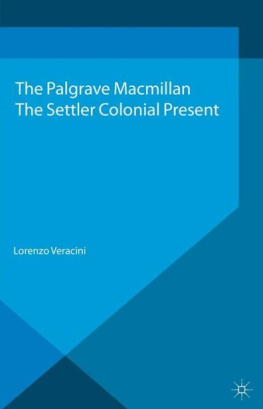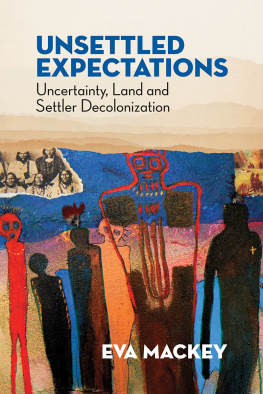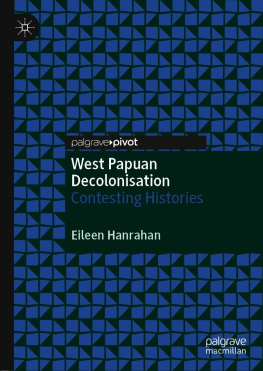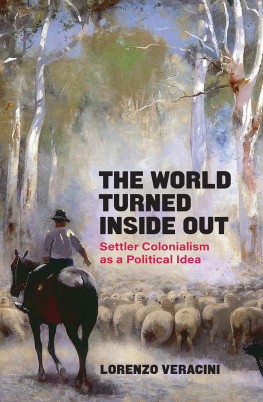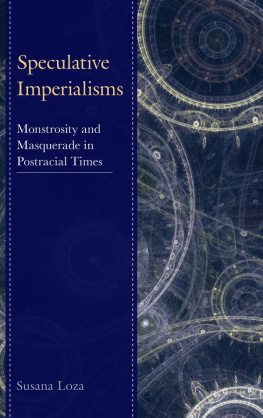L. Veracini - The Settler Colonial Present
Here you can read online L. Veracini - The Settler Colonial Present full text of the book (entire story) in english for free. Download pdf and epub, get meaning, cover and reviews about this ebook. year: 2015, publisher: Palgrave Macmillan UK, genre: Politics. Description of the work, (preface) as well as reviews are available. Best literature library LitArk.com created for fans of good reading and offers a wide selection of genres:
Romance novel
Science fiction
Adventure
Detective
Science
History
Home and family
Prose
Art
Politics
Computer
Non-fiction
Religion
Business
Children
Humor
Choose a favorite category and find really read worthwhile books. Enjoy immersion in the world of imagination, feel the emotions of the characters or learn something new for yourself, make an fascinating discovery.
- Book:The Settler Colonial Present
- Author:
- Publisher:Palgrave Macmillan UK
- Genre:
- Year:2015
- Rating:5 / 5
- Favourites:Add to favourites
- Your mark:
- 100
- 1
- 2
- 3
- 4
- 5
The Settler Colonial Present: summary, description and annotation
We offer to read an annotation, description, summary or preface (depends on what the author of the book "The Settler Colonial Present" wrote himself). If you haven't found the necessary information about the book — write in the comments, we will try to find it.
The Settler Colonial Present — read online for free the complete book (whole text) full work
Below is the text of the book, divided by pages. System saving the place of the last page read, allows you to conveniently read the book "The Settler Colonial Present" online for free, without having to search again every time where you left off. Put a bookmark, and you can go to the page where you finished reading at any time.
Font size:
Interval:
Bookmark:
The Settler Colonial Present
The Settler Colonial Present
Lorenzo Veracini
Swinburne University of Technology, Melbourne, Australia


Lorenzo Veracini 2015
All rights reserved. No reproduction, copy or transmission of this publication may be made without written permission.
No portion of this publication may be reproduced, copied or transmitted save with written permission or in accordance with the provisions of the Copyright, Designs and Patents Act 1988, or under the terms of any licence permitting limited copying issued by the Copyright Licensing Agency, Saffron House, 610 Kirby Street, London EC1N 8TS.
Any person who does any unauthorized act in relation to this publication may be liable to criminal prosecution and civil claims for damages.
The author has asserted his right to be identified as the author of this work in accordance with the Copyright, Designs and Patents Act 1988.
First published 2015 by
PALGRAVE MACMILLAN
Palgrave Macmillan in the UK is an imprint of Macmillan Publishers Limited, registered in England, company number 785998, of Houndmills, Basingstoke, Hampshire RG21 6XS.
Palgrave Macmillan in the US is a division of St Martins Press LLC,
175 Fifth Avenue, New York, NY 10010.
Palgrave Macmillan is the global academic imprint of the above companies and has companies and representatives throughout the world.
Palgrave and Macmillan are registered trademarks in the United States, the United Kingdom, Europe and other countries.
ISBN 9781137372468 hardback
ISBN 9781137394040 paperback
This book is printed on paper suitable for recycling and made from fully managed and sustained forest sources. Logging, pulping and manufacturing processes are expected to conform to the environmental regulations of the country of origin.
A catalogue record for this book is available from the British Library.
A catalog record for this book is available from the Library of Congress.
Contents
Acknowledgements
This research was supported by the Australian Research Councils Discovery Projects funding scheme (project number DP0986984). A five-year fellowship enabled me to pursue without major distractions what I believe was a worthwhile project. I have been lucky and I know it. This book is one of the outcomes of that extended project and the ideas I present in this book are part of a developing research agenda. Some of them were tried first in articles that have appeared in Interventions, Politica e Societ, Arena Journal, Critical Review of International Social and Political Philosophy, and Settler Colonial Studies.
I also want to acknowledge the vacuum cleaner. I started developing the main idea for this book and its methodology the notion that, really, current dispensations no longer require us to perform reproductive labour, and that every definition is a negation while I was cleaning up after we hosted a massive playdate with six children involved, and three were mine. Unlike the wage relation, rent extraction in the age of debt does not care in particular for an industrial reserve army. While indigenous peoples under settler colonialism have always faced a similar predicament, informateur extraordinaire Alex Young and magnificent blogger Edward Cavanagh should also be mentioned here.
The picture I have chosen for this books front cover depicts the 1820 Settler National Monument in Grahamstown, Eastern Cape Province, South Africa. I believe this image engages with the main scholarly propositions this book is premised on. If settler invasion is a structure and not an event, the 1820 Settler National Monument is actually a structure that celebrates an event. The monument, however, represents settlers that are manifestly made by conquest and not just by immigration. They dominate a strange landscape and remain alien to it. It is indeed the combination of an empty setting and very specific human forms that produces a powerful contrast. This image also effectively illustrates the nature of the settler revolution: this reproductive unit is as far as it can be from the rebarbarised Europeans living at the fringe of civilisation that populated the anxious perception of the various metropoles. These respectable settlers bear all the markers of civilisation itself; they dont move away from it, they carry it with them. It is in this way that the settler revolution turned a cautionary tale into a tale of exemplary regeneration. We live with the consequences of that revolution, and it is significant that the monument is about history but is not an historical artefact. In 1994 a bushfire destroyed it. Two years later Nelson Mandela, who knew how to deal with settlers, rededicated it. If this familial unit represents the settler revolution, in a way, the monument epitomises the settler colonial present.
Finally, but very importantly, I want to acknowledge Clares contribution. Among a number of other fundamental things, she introduced me to a few vampire stories.
Introduction: The Settler Colonial Present
In a seminal 1998 book, an intervention that kick-started what with hindsight could be called the settler colonial turn, Patrick Wolfe concluded that settler invasion is a structure not an event.
Wolfes conclusion about structure, event, and their relation was cited again and again by scholars who found the new paradigm effective. (Of course, those who found this paradigm unhelpful also referred to it.) The interventions that collectively constituted this scholarly subfield have recurrently noted that indigenousnonindigenous relationships under settler colonial conditions remain a current concern. Thus, even if it stemmed largely from actual historical work on the settler economies and societies and on the recuperation of the historical trajectories of indigenous peoples, settler colonial studies has continuously and programmatically thought of itself as an inquiry having important ramifications in the present.relevance of settler colonialism as a specific mode of domination. It is an argument about the settler colonial present.
A workable definition and a suitable methodology are needed for this task (any task, really). As well as on the recent scholarly literature on comparative settler colonialism, The Settler Colonial Present is premised on the Spinozean notion that omnis determinatio est negatio, that is, on the proposition that all determination [i.e., all definition] is negation. According to Kenneth Burkes influential rendition of Spinozas method, to define a thing in terms of its context, we must define it in terms of what it is not. This book pursues a contextual definitional strategy. In its four chapters, it outlines the global impact of a specific mode of domination, settler colonialism, by outlining what it is not.
This methodological approach is not only due to the fact that defining contextually is generally an effective way to establish an operative definition of socio-historical phenomena.
In Australia, during earlier times and in various localities this role was performed by Chinese coolies, for example, or by kidnapped Pacific Islanders brought to Queensland to work the sugar plantations, or by the various nonwhite collectives identified by the White Australia policy and its successors. Unsurprisingly, other settler projects have used different collective alterities for their negative definition.
It is not only, however, a matter of defining oneself negatively in the context of a specifically settler colonial population economy. Much more is defined negatively by settler colonial processes. More generally, the notion that class is absent from the settler societies is, after all, as old as the very study of their comparative development, at least as old as Tocquevilles observations on Jacksonian America.
Next pageFont size:
Interval:
Bookmark:
Similar books «The Settler Colonial Present»
Look at similar books to The Settler Colonial Present. We have selected literature similar in name and meaning in the hope of providing readers with more options to find new, interesting, not yet read works.
Discussion, reviews of the book The Settler Colonial Present and just readers' own opinions. Leave your comments, write what you think about the work, its meaning or the main characters. Specify what exactly you liked and what you didn't like, and why you think so.

